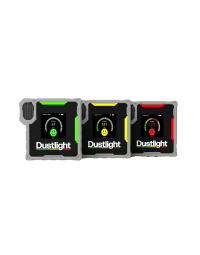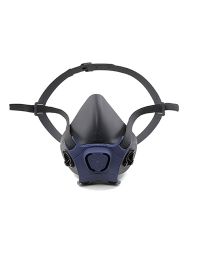Silica is found in many construction materials, from stone to sand and from concrete to clay. Inhaling silica dust can have serious health consequences.
What is silica?
Silica is a compound of two of the earth’s most plentiful elements – silicon and oxygen. It accounts for approximately 59% of the earth’s crust and is the primary constituent of 95% of all known rock types. It isn’t only present in natural stone; silica is also used in the production of bricks, tiles, concrete and mortar. Even plaster and plasterboard contain small quantities of silica.
Why is it a danger to construction workers?
With silica being present in so many building materials, construction workers are typically exposed to higher levels than people in other occupations.
While the silica doesn’t present a risk while it is contained in building products, it is released as a fine dust called respirable crystalline silica (RCS) when these products are cut, drilled, ground or polished. RCS is so fine that it cannot be seen under normal lighting conditions, but this also makes it dangerous, as it can remain airborne for long enough to get deep into the lungs.
Heavy or prolonged exposure to silica dust is a known cause of lung cancer and other serious respiratory diseases such as silicosis, which causes breathing difficulties and lung infections, and chronic obstructive pulmonary disease (COPD), a group of lung diseases that includes bronchitis and emphysema.
With COPD as a result of past exposure at work estimated to be the cause of about 4,000 deaths per year, silica dust is second only to asbestos as a dangerous substance in the construction industry. While COPD is commonly caused by exposure to silica dust over several years, extremely high exposure levels can cause acute symptoms relatively quickly.
How can the risk of silica dust be minimised?
Now that the dangers of silica dust are hitting the headlines, more silica-free alternatives to products may be developed but, as most traditional building materials have a high silica content, it’s likely to be several years before the industry is no longer exposed to silica. However, some measures can be taken to reduce the risk of silica dust inhalation.
Use correct PPE
Proper PPE when working with materials that contain silica should always start with a suitable respirator. Forget those cheap disposable masks; you need a respirator with N95 filters.
PPE shouldn’t stop at a respirator, either; if you’re working with hazardous materials, you could be carrying harmful fibres home to your family. Protective clothing should be worn that prevents dust from settling on skin or working its way into garments.
Suppress dust
Tools that keep cutting blades cool with water also suppress the amount of airborne silica dust. A mobile dust suppression unit that releases a fine water mist into the air may also be a wide investment if you want to reduce the amount of airborne fibres in a general area.
If water dust suppression isn’t viable, filtered dust extraction equipment is also an option, providing it’s been fitted with filters that are fine enough to extract silica dust crystals. Avoid the temptation to use a brush or compressed air to clean dusty equipment, as this will only stir the dust into the air again.
High-speed tools create larger volumes of dust. If possible choose a tool that cuts or drills at a lower speed.
Last, but not least, try to schedule tasks with higher silica exposure to times when fewer people are around.
Maintain a tidy work area
It’s easy to let dust and clutter accumulate around us, but this only makes the situation worse. Use dust-free methods and equipment to keep the work area clean and tidy.
Train and communicate
Effectively managing exposure to silica dust can often be as simple as communicating the risks to workers and training them in methods to reduce dust.
This should be sufficient to persuade them to wear PPE that they might otherwise find uncomfortable and follow safety procedures they might otherwise think are time-consuming and pointless.
Monitor workers’ health and working conditions
Don’t assume that providing your workers with the correct PPE will protect them against silica dust. Regular health checks to monitor the condition of their lungs are more likely to detect potential problems early, while impromptu site visits will tell you the true story about whether PPE is being worn and procedures are being followed.
Of course, as silica dust crystals are often too fine to detect with the naked eye in standard lighting conditions, you are likely to need a little helping technology.
Dustlight, a product which is exclusive to CMT Group, is a compact wearable particulate detector that will alert the user if it detects respirable PM1, PM2.5 and PM10 dust particles. This can serve as a useful reminder to the user to put on suitable PPE, but it does much more.
Controlled by a smartphone app, the Dustlight allows the user to set the alert limits according to their working conditions and to log all particulate measurements. The screen brightness and alarm volume can also be adjusted according to the working environment.
For more information on protecting your workforce with Dustlight, call CMT Group on 020 8311 1144 or send an email to sales@cmt.co.uk.



